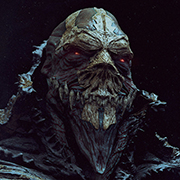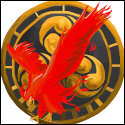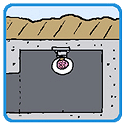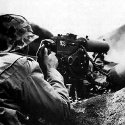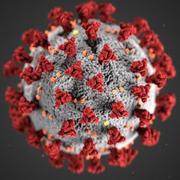|
Hey guys so being as this is the "unofficial" SA history thread I thought this was good place to post this, I really hope it doesn't count as spam. This isn't a commercial venture or anything, just a pet project/hobby of mine. For the last few months I've been researching, writing and recording the  RSS Feed Please feel free to criticize. Ive never even picked up a microphone or done anything creative like this before. Basically this podcast is a ripoff of/homage to Mike Duncans "The History of Rome", Dan Carlins "Hardcore History" and Lars Brownworth's "Norman Centuries". The main difference is that I lack experience/skill/technical knowledge. I am tackling an obscure topic in Asian history that most people in the Anglosphere know nothing about. So far I have released three ~20 minute episodes covering prehistoric Korea to the first century CE.
|
|
|
|

|
| # ? Apr 29, 2024 03:31 |
|
How soft were actual copper or bronze weapons? If they were actually soft and prone to dulling in battle, how prevalent would they be? Also, why do I only think of non-steel weapons in a Europe/Eurasia setting? Did the Chinese/Japanese skip the crap-metal stage and magically go to folded steel, or is it just because there is less known about battles of those time periods? Lastly, what was so special about Hannibal's elephants? From what I read he took 37 of them through the alps and most of them died before battle.
|
|
|
|
I think they played an important role during the battle of the trebia. They died shortly afterwards in the cold weather. I think the only reason people focus on them so much is because they're one of the few instances of elephants being used in european land battles.
|
|
|
|
I may not have nearly as broad an area of expertise or as much in-depth knowledge as some of the guys in this thread, but when it comes to equipment and tactics of WWII (not strategy - I'm still learning there) I tend to be somewhat knowledgeable. My favorite area is US tank destroyers So yeah, if anyone has questions about those feel free to ask. Otherwise, just consider this a "this thread is awesome" post. I learned a lot by reading it.
|
|
|
|
Nuclear Pogostick posted:I may not have nearly as broad an area of expertise or as much in-depth knowledge as some of the guys in this thread, but when it comes to equipment and tactics of WWII (not strategy - I'm still learning there) I tend to be somewhat knowledgeable. I do. What was really the "point" so to speak of tank destroyers? (Besides destroying tanks duh) What role did they fit in with complementing things like Assault Guns and regular battle tanks. And why were they done away with in favor of the Main Battle Tank? And did the US strategy of intending to use tank destroyers to focus on enemy armor in World War 2, rather than have the tank do it, actually work effectively as hoped? Shimrra Jamaane fucked around with this message at 05:28 on Jan 26, 2011 |
|
|
|
Shimrra Jamaane posted:I do. What was really the "point" so to speak of tank destroyers? (Besides destroying tanks duh) What role did they fit in with complementing things like Assault Guns and regular battle tanks. And why were they done away with in favor of the Main Battle Tank? Well, in general, the tank destroyers, despite being open-topped and thinly armored, were much preferred to static AT guns because, despite popular belief, it was a lot more important to be the first one to engage and fire upon the enemy, than to have the biggest gun or the best armor. Operational studies done in 1945 generally indicate that the single biggest indicator of which tank would win an engagement between tanks, was who fired first, that about 90% of engagements of a tank were with soft targets, and that the Sherman was mostly adequate. As to the use of tank destroyers, assault guns, and regular tanks, it really depended on the nation. The Germans, for example, used StuG IIIGs, ostensibly assault guns/tank destroyers(kind of a facetious distinction), in an infantry support role, since they were assigned to the artillery, and they could engage both armor and infantry reasonably well. That, and Germany did not have a lot of tanks available during that period.
|
|
|
|
Shimrra Jamaane posted:I do. What was really the "point" so to speak of tank destroyers? (Besides destroying tanks duh) What role did they fit in with complementing things like Assault Guns and regular battle tanks. And why were they done away with in favor of the Main Battle Tank? There are essentially two different bloodlines for TDs, one was as intentional doctrine, one was as a stopgap measure. Prewar/early war armor doctrine for everywhere but France divided armor to kill other armor, and armor for infantry support. The biggest reason for this was the guns available, just anything much larger than 37mm was fairly low velocity, so designers had to choose between having a tank with a caliber large enough to deliver a healthy amount of HE and a caliber with a high enough muzzle velocity to reliably penetrate armor. For the US, this manifested itself in designating tanks to support the infantry (M3 and M4), and tank destroyers (the M10) to destroy enemy tanks. In Germany, they just designed different tanks for different tasks, the best example being the PzIII as the anti-tank tank with a high velocity 37mm gun, and the PzIV with a low velocity 75mm gun. The doctrine was similar, the IIIs were to hunt and kill enemy tanks and had a very important defensive role, the IVs were to roll about with the infantry. Of course, things didn't happen like this. The Germans found this out early on, the French S35 (which was the best tank in the world at the time) had a really nasty 47mm gun that could perform both roles, and German tanks were largely outmatched by it (edit - and let's not forget the immortal British Matilda tank either). This prompted designers to start looking at mounting more all-purpose guns on regular chassis, and this need became very acute when the Germans met the Russian heavy tanks and eventually the T-34. I would say their first true main battle tank was the upgunned PzIV, and of course eventually the Panther. The second bloodline came from the eastern front, where the Germans had a shitload of Russian tanks to deal with and a bunch of crap laying around that couldn't do anything about it. Smart folk they were, they started putting bigass guns on old tank chassis and wound up with all sorts of crazy and fairly effective crap, from the Hetzer all the way up to the Nashorn. These were usually lightly armored, had no turret, were basically self propelled high velocity guns. These TDs worked pretty well, particularly in the increasingly common defensive role, but if they were hit by an enemy tank they were toast. Eventually purpose built heavily armored TDs came out, starting with the JgdPzIV and all the way up to the behemoth Jagdtiger. These were more or less strictly defensive weapons, they sacrificed speed and a turret for super heavy armor and super big guns. They were used mainly as ambush weapons, and they were effective in this role. For the US, the TD/tank separate doctrine never really went anywhere, it was inevitable that tanks would meet up with other tanks, and the M3/M4 were pretty undergunned compared to the German armor they faced off against in North Africa. Eventually they fitted a very solid high velocity 76mm to the Sherman, and the Brits hooked it up with their superb 17 pounder, and the western allies had a very capable MBT. By this time, TDs were being used mainly as scouting platforms thanks to their speed, they weren't great infantry support vehicles (they were open topped) and they were underarmored compared to the tanks they were supposed to destroy. Eventually they were relegated mostly to being just self propelled artillery, especially as the E8 Sherman and the M26 entered the theater. bewbies fucked around with this message at 06:16 on Jan 26, 2011 |
|
|
|
Gimpalimpa posted:How soft were actual copper or bronze weapons? If they were actually soft and prone to dulling in battle, how prevalent would they be? Also, why do I only think of non-steel weapons in a Europe/Eurasia setting? Did the Chinese/Japanese skip the crap-metal stage and magically go to folded steel, or is it just because there is less known about battles of those time periods? Beyond "quite soft, but better than the alternatives at the time", I can't help with the copper/bronze issue being a fan of history and not an actual historian, but it is worth noting that axes and spears predominated in that period. Not a lot of bronze swords, and those were quite short. As to the East Asian Bronze Age, of course they had one. And, while I'm too lazy to give a citation, I'm under the belief that it's quite well documented, just not very well dramatized. Probably for the same reason that 300 showed Butler et al running around with steel weapons when that hadn't been invented yet.
|
|
|
|
Xiahou Dun posted:Probably for the same reason that 300 showed Butler et al running around with steel weapons when that hadn't been invented yet. I'm glad somebody else noticed that. I mentioned it to one of my friends and they told me it was whatever, citing that as the least of the historical inaccuracies. Obviously the monsters (among many things) aren't real but their weapons weren't quite so strong or shiny. Also, those men could have been gay for each other. Unless you've studied military history (or Greek history in general) about it, mentioning stuff like that to people who thought the movie was bad rear end vehemently deny the possibility. Oh well. Does anyone know why Europeans tried to colonize southern Africa so much more heavily than somewhere closer? I know colonization was everywhere, and there were white settlers in Zambia, Kenya, Uganda, Cameroon, etc but why not as heavy as at the southern most end of the continent?
|
|
|
|
GreenCard78 posted:Does anyone know why Europeans tried to colonize southern Africa so much more heavily than somewhere closer? I know colonization was everywhere, and there were white settlers in Zambia, Kenya, Uganda, Cameroon, etc but why not as heavy as at the southern most end of the continent? South Africa controlled the sea lanes to East Asia.
|
|
|
|
Yeah, I'm just enough of a military history nerd to twitch whenever a movie has steel weapons in the Bronze Age.
|
|
|
|
Rent-A-Cop posted:South Africa controlled the sea lanes to East Asia. Yes, and the European companies that traded with India and East Asia were very interested in having colonized stations where to resupply their ships. From 1652 to 1795 the are was administrated by the Dutch East Indian Company, before the British Empire took over (setting the stage for the First and Second Boer Wars). So the initial stage of colonization of South Africa was less fuelled by any European state interests than it was by semi-independent economical interests.
|
|
|
|
Gimpalimpa posted:How soft were actual copper or bronze weapons? If they were actually soft and prone to dulling in battle, how prevalent would they be? Also, why do I only think of non-steel weapons in a Europe/Eurasia setting? Did the Chinese/Japanese skip the crap-metal stage and magically go to folded steel, or is it just because there is less known about battles of those time periods? Not that soft. Work hardened bronze holds a decent edge, though any weapon that sees use in chopping people gets dulled. In Japan the working of both steel and bronze showed up almost at the same time, from the continent, so there was no bronze age for them. China, however, definitely had bronze weapons, most notably the ge, often called a halberd or dagger-axe. Here's a pair that sold at Christie's http://www.christies.com/LotFinder/lot_details.aspx?intObjectID=5298148 quote:Lastly, what was so special about Hannibal's elephants? From what I read he took 37 of them through the alps and most of them died before battle. They were special because they were African Forest elephants, and thus they were not only more easily available to Carthage, but also easier to control, being smaller. Despite the lesser size they were no less frightening on the battlefield, what with still being huge as gently caress. Xiahou Dun posted:Probably for the same reason that 300 showed Butler et al running around with steel weapons when that hadn't been invented yet. They had been invented. The earliest extant steel xiphos is from around 500. There are extant steel spears from plenty earlier. 300 was right, hang up your gloves. As an aside, steel and iron are used interchangeably in ancient sources and, sadly, in plenty of modern archaeology.
|
|
|
|
Panzeh posted:As to the use of tank destroyers, assault guns, and regular tanks, it really depended on the nation. The Germans, for example, used StuG IIIGs, ostensibly assault guns/tank destroyers(kind of a facetious distinction), in an infantry support role, since they were assigned to the artillery, and they could engage both armor and infantry reasonably well. That, and Germany did not have a lot of tanks available during that period. The StuG began as a humble 75L/24-armed weapon platform, suitable for pounding entrenched enemies but of no use against medium tanks. After the invasion of Russia Germans realized they needed better armed AFV's, and Panzer IV was the only operational tank that could be fitted with the heavier 75L/43 (later, L/48) gun in its turret. Therefore the Panzer III based StuG's were upgunned to bring more firepower to face the KV's and T-34's. I think it's fair to say that after they were fitted with high velocity guns, they became tank destroyers by nature and assault guns in name only. StuH42 with its 105mm howitzer was more true to the name. The US tank destroyer doctrine was unrealistic. Eg. in Normandy most German Panzer divisions were facing the Brits in the more open fields around Caen, leaving US M-10 TD battalions useless. As a result, they were given tasks that were supposed to fall on tanks, like infantry support. Meanwhile, when tanks encountered Panzers, they couldn't just retreat and call TD's to deal with them. The M-10 was also slow and had a terribly slow, hand-cranked turret, limiting its tactical usability. The later M-18 Hellcat was far superior in speed, and while this came at the cost of lighter armour, it was a more successful design. Nevertheless, the days of dedicated Tank Destroyers were soon over. Nenonen fucked around with this message at 17:24 on Jan 26, 2011 |
|
|
|
GreenCard78 posted:Does anyone know why Europeans tried to colonize southern Africa so much more heavily than somewhere closer? I know colonization was everywhere, and there were white settlers in Zambia, Kenya, Uganda, Cameroon, etc but why not as heavy as at the southern most end of the continent? I'm pretty sure climate has something to do with it as well. Most of North Africa is a desert, and occupied by Arabs who could take care of themselves to at least some extent. Go further south and you hit malaria infested jungle, which might be fine if you just want to extract resources but you'd have a hard time convincing Europeans to move there. Southern Africa has a much more temperate climate that would have felt more at home to the colonizers and fit their lifestyle better.
|
|
|
|
Could you kind sirs ease up on the use of military jargon, especially when discussing modern military? I like this thread a lot, but when you start throwing more than one abbreviation like "AFV" per sentence without explaining it, my little commoner's brain hurts. [/rant]
|
|
|
|
What does the future hold for battalions of armor?
|
|
|
|
iv46vi posted:Could you kind sirs ease up on the use of military jargon, especially when discussing modern military? I like this thread a lot, but when you start throwing more than one abbreviation like "AFV" per sentence without explaining it, my little commoner's brain hurts. [/rant] The gun naming convention like 75 L/43 means 75mm gun with barrel length 43 times caliber. So a 75 L/48 is twice as long as 75 L/24. The longer gun usually also has a higher muzzle velocity, which also results in more kinetic energy and therefore penetration capability, other things being equal. Unless the shell shatters...
|
|
|
|
Boiled Water posted:What does the future hold for battalions of armor? Some say the role of armour battalions in the future will diminish to the point of being almost obsolete if the current development continues. Anti-Tank weapons are getting smaller, more sophisticated and powerful. Infantry was once dominated by the presence of tanks; now they are the tank's worst enemy right after jet-planes and attack helicopters.
|
|
|
|
GyverMac posted:Some say the role of armour battalions in the future will diminish to the point of being almost obsolete if the current development continues. Anti-Tank weapons are getting smaller, more sophisticated and powerful. Infantry was once dominated by the presence of tanks; now they are the tank's worst enemy right after jet-planes and attack helicopters. The problem is, they said the same thing in the 70s when ATGMs came out in numbers, but mobility is still really important. I tend to think it's more, full out MBTs are not as useful as they used to be. That and they don't accomplish the political tasks a modern army is asked to do these days.
|
|
|
|
Christoff posted:I don't want to bomb this page with the same pictures but can anyone identify all the rank/insignia from the pictures I posted on the last page?
|
|
|
|
Nenonen posted:... Thank you. Those kinds of details make the point much clearer for me. [/ocd i guess]
|
|
|
|
Boiled Water posted:What does the future hold for battalions of armor? We have had tanks for almost a century now, and during all that time counter-measures have been developed to deter their threat, with varying degrees of success. WW1 tanks came -> Anti-Tank Rifles were developed. Ordinary infantry guns could knock them out with direct fire. After the war, a little heavier tanks were built. Specialized anti-tank guns were acquired to deter their threat, their calibres quickly rose from 20-25mm to 37-45mm prior to war. During the war, tank armour plates soon got thicker and thicker, and ATG's tried to follow this development. First to 50-57mm, then 75-76mm and in no time 88-128mm was deemed necessary to knock out the heaviest armour. But these guns were already as heavy as smaller tanks, and required big vehicles to pull them around. The other way was to penetrate armour not with kinetic energy but with a shaped charge. A shaped charge or hollow charge or HEAT (High Explosive Anti Tank) could be shot at lower velocities, meaning it didn't need a huge fricking gun: a shoulder-launched rocket or a light weight recoilless rifle was enough. Eg. Bazooka, Panzerschreck, Panzerfaust, PIAT. This gave infantry its teeth back, but low velocity rocket launchers had a limited range: a tank could lay accurate gun fire at 2km, but a Bazooka might hit something at 200 meters if there wasn't much wind. To give the shaped charges more reach, Anti-Tank Guided Missiles (ATGM) were developed. These could engage tanks at ranges where they wouldn't even be able to return effective fire! However, the first generation ATGM's were slow and hard to steer, so well-trained tankers could avoid them with well-executed maneuvers. Later ATGM's were far more dangerous. Explosive Reactive Armor (ERA) was invented to counter the shaped charge with a counter-explosion; then someone came up with the idea of placing TWO shaped charges in tandem to counter ERA. After laser-guided missiles became common, laser jamming systems were developed. The most recent generation of ATGM's utilizes methods that seem to be hard to counter. Take Javelin, for instance. It is a fire-and-forget weapon, meaning that once it is shot, distracting or killing the operator won't do anything to help the target unlike with earlier generation missiles. It can also be used for top attack, meaning that the weakest side of the tank will be hit, most likely resulting in penetration. The Gil/EuroSpike can also be guided via an optic fiber so you can fire it from behind a hill and acquire a target during the flight, giving the enemy even less of a chance for taking cover. But there are possible counter-measures, naturally. The most interesting of all counter measure systems are the 'hard-kill' systems, such as the Russian ARENA. These detect the missile eg. with a radar, calculate its flight path and then fire projectiles to destroy the missile. Of course it's a bit dangerous if there is infantry nearby, but then, it also sucks if the tanks supporting infantry advance blow up. No idea how effective it'd be in a real war, though. Another option is an 'energy field' that somehow renders a shaped charge ineffective - this option has apparently been successfully tested too, but it's not yet in use anywhere. Now, as to what will be the future of armoured troops, it's important to realize that 1st world armies seldom fight wars with other 1st world armies (I'm including Russia in 1st world here), and less developed countries often need their armed forces mainly against their neighbours and to suppress internal conflicts. It could take a long time before anything really happens here. Taliban guerrillas and the like aren't going to acquire top-attack ATGM's or Predator UAV's any time soon, so tanks will be useful against them. But I do believe that over time the need for heavy main battle tanks like Abrams or T-90 diminishes. Future AFV's will be crammed with counter-measures or they will operate under the umbrella of vehicles that provide an umbrella of such protection for them, that's for sure.
|
|
|
|
Chade Johnson posted:Keep in mind UNITA was supported by South Africa, the MPLA simply didn't have the equipment or training to compete. From what I've read from the book "Days of the generals", the amount of equipment was surely not a problem, they had plenty of armor, jets, other equipment. Thanks to their generous friends from USSR. Though cubans were most likely operating some of that stuff. Quality of equipment is a whole another question though, and in mid 1970s south africans were surely behind in some parts. For example in 1976 during Operation Savannah, south africans had nothing that could shoot as far as BM-21s could, nor with such massive firepower. WWII-era 25-pounders could only shoot as far as 10 km. Then there were 5,5 inch guns with range of 19 kilometres, but they were heavy and they could fit just two on two C-130s with skeleton crew. That disparity changed by 1982 when G5 and Valkyri MLRS appeared (which was reverse engineered from captured BM-21s).
|
|
|
|
Christoff posted:I don't want to bomb this page with the same pictures but can anyone identify all the rank/insignia from the pictures I posted on the last page? Well, at least according to that obituary he was a Feldwebel, which equals Staff Sergeant in the US Army. So he was a middle-rank non-comissioned officer, but not a "proper" officer. That particular picture you posted is a bit too blurry to make out any details, but that patch on his sleeve and on his cap in the other pic seem to depict the Edelweiss (he also seems to have them on his chest along with the medals in the other pic), which would mean that he was in the German mountain infantry, or Gebirgsjäger. That would make sense, since there was IIRC at least two Gebirgsjäger divisions operating in Lapland. By the way, according to the obituary, he was killed on 9th of October 1944, and by that time Finland was already at war with Germany, though judging by the place of death (which is in Pechenga/Petsamo) he did indeed die fighting Soviets and not Finns.
|
|
|
|
Puukko naamassa posted:By the way, according to the obituary, he was killed on 9th of October 1944, and by that time Finland was already at war with Germany, though judging by the place of death (which is in Pechenga/Petsamo) he did indeed die fighting Soviets and not Finns.
|
|
|
|
iv46vi posted:Could you kind sirs ease up on the use of military jargon, especially when discussing modern military? I like this thread a lot, but when you start throwing more than one abbreviation like "AFV" per sentence without explaining it, my little commoner's brain hurts. [/rant] Panzeh posted:The problem is, they said the same thing in the 70s when ATGMs came out in numbers, but mobility is still really important. I tend to think it's more, full out MBTs are not as useful as they used to be. That and they don't accomplish the political tasks a modern army is asked to do these days.  He's not alone in that sentiment. Nenonen nicely explains ATGM below, but MBT still has me stumped. Nenonen posted:The most interesting of all counter measure systems are the 'hard-kill' systems, such as the Russian ARENA.
|
|
|
|
Main Battle Tank. A good technique I've learned is the first time you use a longish-phrase you put the acronym after it in parentheses. For example "Main Battle Tanks (MBTs) are bad rear end." Then you go on to use MBT every time. In case the person glosses over the explanation it's still easy to find with Ctrl-F or equivalent.
|
|
|
Revolvyerom posted:Please listen to iv46vi A majority of acronyms can be figured out through wikipedia or google. If not immediately, then with some deductive reasoning.
|
|
|
|
|
That doesn't make the request that they be explained when introduced unreasonable.
|
|
|
|
Veins McGee posted:A majority of acronyms can be figured out through wikipedia or google. If not immediately, then with some deductive reasoning. http://www.acronymfinder.com/ this works for most of them, including some of the more obscure ones like MAWTS
|
|
|
|
I wanted to ask what people more educated than me think about the Gaya/Kaya Confederacy. I know that the Korean texts tend to be very dismissive of them, while the Japanese historians have claimed them to be a "military outpost." My personal opinion is that the "Japanese" and "Koreans" of that era were much more alike then anyone admits; thus that the idea of them being an 'outpost' is an exaggeration, but it seems likely that they were aligned with the "Japanese" living on what we now call Japan. Despite the Japanese being clearly technologically inferior they and their population would have at least given the Gaya a chance of not getting completely overwhelmed by the much larger countries surrounding it.
|
|
|
|
Nenonen posted:The US tank destroyer doctrine was unrealistic. Eg. in Normandy most German Panzer divisions were facing the Brits in the more open fields around Caen, leaving US M-10 TD battalions useless. As a result, they were given tasks that were supposed to fall on tanks, like infantry support. Meanwhile, when tanks encountered Panzers, they couldn't just retreat and call TD's to deal with them. The M-10 was also slow and had a terribly slow, hand-cranked turret, limiting its tactical usability. The later M-18 Hellcat was far superior in speed, and while this came at the cost of lighter armour, it was a more successful design. Nevertheless, the days of dedicated Tank Destroyers were soon over. It may be worth noting that any failure of US TD doctrine is mostly because they didn't face many German armored blitzkriegs, responding to which was their doctrinal role. Every time the Germans attacked en masse with armor and US TDs were in the area, they responded effectively per their doctrinal role. Germans break into the defensive lines, TDs flood to the wound area and bleed the German armor through shoot-and-scoot ambushes and getting the first shot off in engagements, until the Germans stall. This is what happens at El Guettar, Salerno, Mortain, Elsenborn in the Bulge, every engagement where US TDs were put in place to fulfill their doctrinal role, they succeeded. Is it the TD's fault that the Germans didn't give them that chance more often? In fact, I know of no engagement where US TDs were put in position to fulfill their doctrinal role and failed to do so, except at Kasserine, and those guys were driving half-tracks with guns mounted - M10s weren't in theater yet. So it's not really fair to say that TDs couldn't do what a tank did - it's like calling out a dog for not being able to do what a horse can do. It's a dog, it's not its fault, maybe it is really good at doing dog things though. US TDs killed German tanks more effectively than any other arm of the Allied force. And frankly, I'd rather have a tool in my OOB that specializes in responding to armor assaults and not need it than to not have it and need it.
|
|
|
|
Puukko naamassa posted:Well, at least according to that obituary he was a Feldwebel, which equals Staff Sergeant in the US Army. So he was a middle-rank non-comissioned officer, but not a "proper" officer. Right. He was from Tirol, Austria, which is an area chock full of mountains. If that mattered. And yeah. I was always told he was killed in Finland by the Russians. And that chain going from his shoulder? Thanks dudes
|
|
|
|
Christoff posted:And that chain going from his shoulder? I did some quick research, and looks like it's not a chain but the lanyard of a Badge of Marksmanship: http://en.wikipedia.org/wiki/German_Armed_Forces_Badge_of_Marksmanship
|
|
|
|
uinfuirudo posted:I wanted to ask what people more educated than me think about the Gaya/Kaya Confederacy. I know that the Korean texts tend to be very dismissive of them, while the Japanese historians have claimed them to be a "military outpost." I'm not an expert on this period of Japanese history, but it seems that there are exactly no evidence for the Gaya Confederacy to be a Japanese military outpost: the only ones claiming so are revisionist Japanese historians, and they are notorius for coming up with bad history to make Japan sounds nicer. Such as claiming the case that pretty much all Japanese aristocracy was imported from Korea, because heavens forbid that all Japanese Emperors haven't been 100% Japanese from day 0. One hilarious moment of Japanese recent history was during the shared World Cup in Japan and Korea when the Emperor himself admitted to the fact that a large part of his ancestry comes from Korea and that the family has had Korean blood from the start, a statement that underwent a complete domestic media blackout in Japan while the Japanese cupped their ears and shouted "LALALA I CAN'T HEAR YOU!". But yeah, it makes no sense that it would be a Japanese outpost when it was much more technologically advanced (like all of korea at the time). To me it just sounds like they were trading partners who were on better terms than the rest of Korea, which is hardly surprising as early Japan relied on Korea for much of their contact with the rest of the world and were heavily involved in Korean politics at the time.
|
|
|
|
Puukko naamassa posted:I did some quick research, and looks like it's not a chain but the lanyard of a Badge of Marksmanship: I just didn't know how else to describe it. Thanks though. I posted this is another thread with only 1 response. Maybe I can get more here. Can I hear some stories from the other side? I know we love our American heroes and conquests but I want to hear it from the enemy. I know it's un-American but gently caress, obviously the enemy in WWI, 2, Korean war, Vietnam, etc were doing something right to keep the wars going so long and so devastating for both sides. What were their revolutionary/great conquest, victories, inventions, heroes, etc
|
|
|
|
uinfuirudo posted:I wanted to ask what people more educated than me think about the Gaya/Kaya Confederacy. I know that the Korean texts tend to be very dismissive of them, while the Japanese historians have claimed them to be a "military outpost." Well the Japanese recieved Buddhism from the Korean kingdom of Paekche in the 6th century and yes they definitely were a lot more alike than either side would like to admit. We know from King Gwanggaeto's memorial stele that he dispatched a force of tens of thousands from the Kingdom of Goguryeo to aid the peoples of the south against the Wa peoples (the Japanese) but this doesn't specifically differentiate between the Gaya confederacy and random groups of Japanese pirates. Gaya might have been a military/trading outpost but the idea of it exercising real political control over the area is highly unlikely. The whole idea is only plausible if the Japanese had an extreme technological edge over the peoples of the Korean penisula, but they didn't. Japan was farther away from China than Korea and as such they were probably technologically underdeveloped compared to the Korean kingdoms. The history texts I have read made it seem like as soon as Paekche and Silla got their poo poo together it was pretty much over for Gaya. Gaya was on prime land - the Nakdong River basin was the most important source of iron ore on the Korean peninsula. It was not a question of if, but when. Gaya probably only existed because the proto-states of southern korea were so decentralized and so focused on other problems. On a side note the Japanese colonization of Korea is mind bogglingly complex. I mean, when Paekche was under attack by the Silla-Tang alliance, Paekche asked for and recieved aid from the Japanese. The sources make it clear that the Japanese entered the war because of a sort of confucian brotherly obligation. and then theres this... http://en.wikipedia.org/wiki/Mimizuka THE LUMMOX fucked around with this message at 09:07 on Jan 27, 2011 |
|
|
|
Revolvyerom posted:Where can I find more information about this? In the internet... Check here.
|
|
|
|

|
| # ? Apr 29, 2024 03:31 |
|
drat you guys for coming in before I could answer the TD questions.  Serves me right for forgetting to bookmark this thread. Serves me right for forgetting to bookmark this thread.But yeah, like the guys before me said in a far more eloquent matter, the TDs were made to rush forward and pop enemy vehicles, but weren't honestly that great at it. The M10 was fairly obsolete, but the Hellcat and M36 Jackson were decent - it's just that as time went on they became less and less practical. While the idea of having a quick-moving, shoot and scoot force to take on enemy tanks using speed is all well and good, it just was not really worth it or particularly effective in the long run when considering the input of manpower and resources. Why spend X thousand dollars and X amount of raw materials and man hours on a TD unit when you could just slap a 76mm gun on an Sherman with HVAP (high velocity armored penetrator, basically the predecessor to today's sabot rounds, aluminum casing around a dense core like tungsten) rounds and have it be more flexible? Of course, that brings up the whole fact that US tanks throughout world war II were usually pretty goddamn outmatched in everything but two regards: reliability and ease of manufacture. It took until nearly the end of the war to field the Pershing, which was one of the only US tanks that could take on a Panther or Tiger and have a snowball's chance of winning (and even then, it'd have to get fairly lucky).
|
|
|





